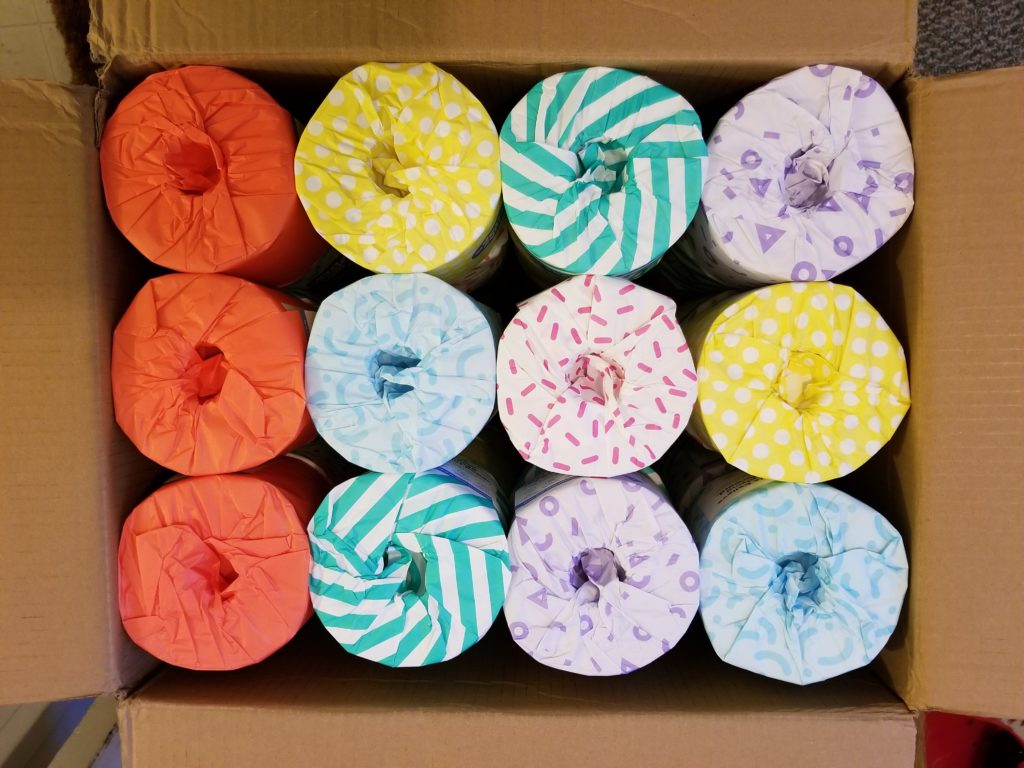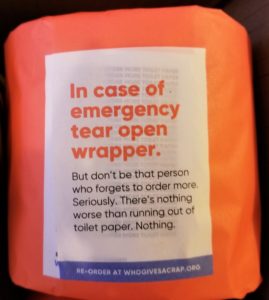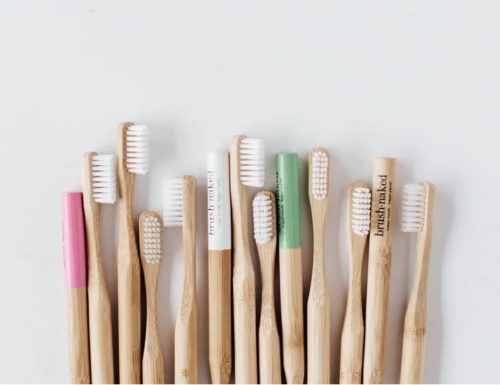I’ve heard it said that your greatest strength is also your greatest weakness. In my first career, my team had to read the book StrengthsFinder and take the test to identify our top five strengths, the idea being that we could then build upon and use those strengths more beneficially in our positions. According to the test (and born out by the first sentence of this paragraph), one of my top strengths is input.

I crave and am a master at synthesizing and making sense of information from multiple data sources and streams. This skill is and has been a strength in my professional world. It can also be a detriment in my personal world if I’m not careful, i.e., social media inundation. I’m curious whether other people who have “input” as a top strength struggle to manage the now-continuous availability and onslaught of communication. (Or maybe there are a lot more people who have that as a top strength. Or both!)
My somewhat clumsy way of managing my tendency to overload has been to severely limit my online presence and interactions. When I left my first career, I deleted my LinkedIn account with hundreds of contacts. (Lots of pearl-clutching from colleagues who thought I had committed professional suicide ensued: “How will you NETWORK? How will people be able to look you up and find out your work history?” Truthfully, I didn’t even remember how I knew a lot of my contacts.) Later, I ditched Twitter and when I had to join a Facebook group as part of my continuing education, I did so very reluctantly and with a partial name and “no friends” policy so I couldn’t be found (read: tempted).
Last autumn I began managing the Facebook page for a friend’s business as part of my professional development around Healing Touch. Every day I scroll through my feed looking for positive or inspiring posts to share with the page’s followers. (I only share what others have posted instead of creating my own posts – unless they are about upcoming workshops or offers.)
In my feed one day was an ad by Who Gives A Crap, a company that makes toilet paper from bamboo and gives back 50 percent of their profits to help build toilets in impoverished areas around the globe. They also make 3-ply toilet paper from recycled books and office paper that is “soft as unicorn kisses and as strong as 1000 ponies.” Now I’m a firm supporter of socially-conscious businesses, but combine that with a clever sense of humor and I’m a for-life customer. Or at least one who will click through your ad and make a purchase.


We are thrilled with our new toilet paper (thrilled, I tell you!). In addition to colorful paper wrapping and fun, pithy quips on the packaging, the delivery comes in a gigantic cardboard box with “Who Gives A Crap” emblazoned across the side. Think how much fun it is for your mail carrier! We also ordered their bamboo tissues which were cleverly packed with the TP. (Here’s a hard-earned tip: you need to open the giant box from one end to get the TP and then turn it upside down and open it from the other end to get the tissues. It’s a unique design that doesn’t require plastic tape whilst being a fun challenge for people who like a puzzle.)
The timing of the ad was perfect as we have been actively looking for ways to focus on the “reduce” part of “reduce, reuse, recycle” since recycling has its limits. (Maybe a more accurate verb would be “replace”, since we’re not really reducing our use of TP.) Once you become curious about your consumption, you become painfully aware of how many things you either throw away, or use once (and then throw away – I’m looking at you, plastic water bottles and [shudder] Kuerig coffee pods), or that are made of plastic (which lasts forever).
It can be a trek to leave ingrained habits behind, but we started small and have committed to doing a little bit more over time to build and sustain new habits. One of our big lessons is that it’s easy to use convenience to justify our consumption. But when we looked at it a little bit closer, oftentimes “convenience” really meant “lack of planning” or “laziness.” For example, we started years ago by buying water bottles and reusable coffee mugs. Of course, the purchase was simple. It’s creating the new habit of filling up the bottle/mug and taking it with you that’s harder. When the county I worked in banned plastic bags, I started carrying a bag with me for other purchases like when I stopped at the drugstore. However, I found that I didn’t do as well bringing a bag when I shopped at the drugstore in my community (which does not have a ban on plastic bags and actually seems to have doubled down on double-bagging to make some weird point).
We have been pretty consistent about using reusable bags for our groceries, and more recently, reusable bags for our produce. In the kitchen, we switched our regular paper towels to bamboo paper towels that we can throw in the washer and re-use multiple times. We also stopped using plastic sponges and now use compostable loofah plant sponges for doing dishes. Next up are bamboo toothbrushes and metal razors.

Over the years, we tried to phase out single-use/plastic as we stumbled upon various products or practices. But by using the positive aspects of input (Facebook ads based on secret algorithms of your online activity), we’re now more quickly reducing our output with access to resources like Plastic Free July, Plastic Free Shopper and Buy Me Once. Even our new favorite TP company shared their own plastic-free journey and ideas for reducing plastic in other areas of the home.
If you’re interested in reducing your single use/plastic items, here are my top tips based on personal experience/impact:
- For pete’s sake, just carry a bag with you or leave one in your car to use when shopping (this is a note to self).
- Treat your filled water bottle or coffee/tea mug like it’s your house keys and you can’t leave the house without it (another note to self).
- Switch to Who Gives A Crap and get cool toilet paper delivered for free right to your front door! (I don’t get paid for endorsements, and I’m ignoring the cost of delivery on the environment at the moment.) Throw in an order of bamboo paper towels and tissues while you’re at it and save another tree/delivery.
- Throw out your Keurig and brew something healthy! (Keurig=evil)
- Ditch your liquid soap and scrubby and rediscover bar soap and a washcloth. (This method and soap-on-a-rope were the only way to get clean when we were kids. Embrace nostalgia!)
- Stop using cotton balls or wipes to apply facial toner or remove makeup. Pat on toner with your fingertips and use a good facial bar soap and/or organic coconut oil and a soft washcloth to remove makeup.
- Refuse plastic straws at restaurants (I shudder to remember my old coffee drive-thru order that included no whip and two straws).
- Keep a spoon, fork, spork, or chopsticks in your bag or car so you can turn away plasticware when eating out.
Do you have a favorite tip or practice? Please share in the comments below!

Love it all Kim! I too have been trying to reduce the packaging that I ‘buy’- that’s my way of looking at it. We do have a Kuerig, but do not use the plastic pods. I ordered reusable filter pods. You put your own coffee in, and clean after use. Yes, I ordered online from the “A” word.
I have been wanting to try the bamboo toothbrushes- how do they hold up? Thanks for the ideas!!!
Ooh! I’m so happy to hear about the reusable filter pods! I’ll need to modify my quite judge-y “Keurig=evil” comment. 🙂 I just sent out my newsletter which has a great visual for reducing plastic use. Thanks, Staci!